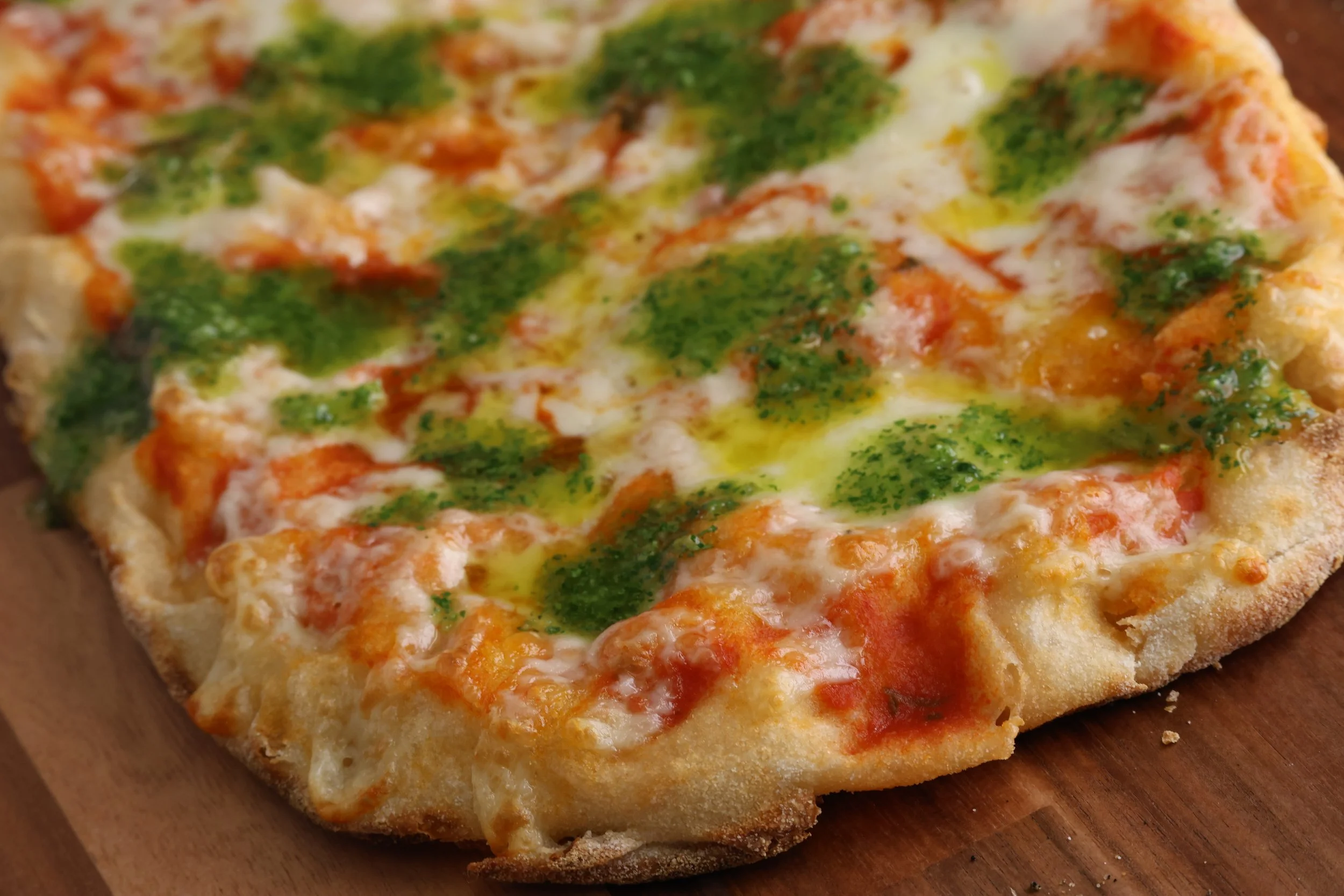
“The Healthiest Pizza
you can have.”
Origins
PINSA comes from the Latin word "PINSERE" which means to stretch and spread. The “Peen-sa” was initially baked by the rural population living outside of ancient Rome over two thousand years ago.
The making
The modern Pinsa Romana recipe has evolved over the centuries and is now made using Rice Flour, soya, and Whey Flour. The unique ingredients and the complex process of making the dough result in a light and airy dough that's crispy on the outside and soft on the inside.
Water is our best friend
The dough is made with 80% water (80% hydration dough) and tiny salt. Due to its high water content, the dough it's pressed flat by the chef's fingers before baking at a lower temperature allowing all gluten to break down.
Pinsa Vs Pizza, What's the difference?
During maturation, complex sugars, proteins, and starches break down into simple sugars and amino acids, making Pinsa easy to digest, much more so than Pizza dough. Simple, organic ingredients and lower cooking temperatures also make Pinsa lower in calories and fat, and a high water ratio helps the food naturally pass the digestive system faster. It is a great, tasty treat for those looking to eat natural and healthy food.
Our dough mixture contains prime-quality wheat, rice, and soy flour, non-GMO! - high-quality wheat can absorb more water - rice gives a soft and crunchy texture - soy replaces all animal fats.
Pinsa has 75% hydration, while a traditional pizza only has 50%. Most importantly, our 48-hour maturation process transforms complex sugars into simple sugars, making the dough highly digestible for the body.
Pizza vs. Pinsa
Numbers Talk
48% LESS SUGAR
85% LESS FAT
100% LESS CHOLESTEROL
33% LESS KCAL




